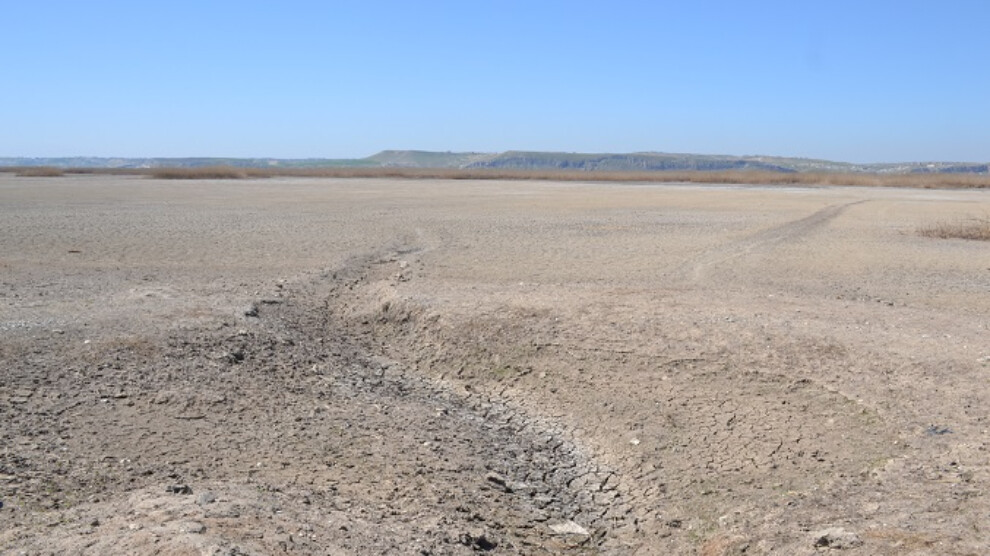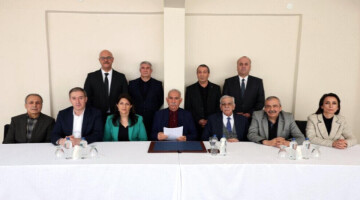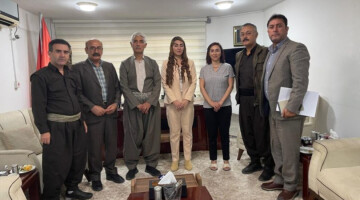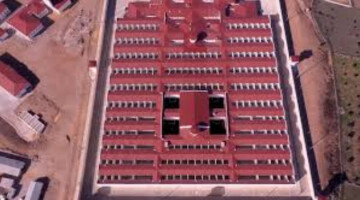Temperatures are expected to be high in the region this summer. The interruption of the supply of the Euphrates River by the Turkish state will further aggravate the situation of the people of Northern and Eastern Syria. The water problem of the Euphrates River increases every year in the summer months and reaches a catastrophic level.
Since the beginning of the Syrian crisis, the Turkish state started to use the water level of the Euphrates River as a war tool by constantly violating the agreement it signed with Syria in 1987. According to this agreement, the Turkish state must release 500 cubic meters of water per second, and Syria has to share this amount with Iraq.
However, the vacuum and security problem created by the crisis in Syria enabled the Turkish state to control the waters of the Euphrates River on its own, without being accountable to anyone. As a result, the Turkish state is stealing the share of water that is the right of Syrians.
After the Rojava (Tişrîn) Dam and the Tabqa Dam were liberated from ISIS, the Turkish state began to cut off the water of the Euphrates River.
The Turkish state has been cutting off the water of the Euphrates from time to time since 2016. A large amount of water that must flow into Syria has been cut off since 2021, leaving a flow of only 200 cubic meters of water per second.
Deeper crisis in the summer
The amount of water released during the summer season is decreasing and the crisis is getting deeper. Since the natural flow of water decreases after the spring, the Turkish state steals the Syrians' share of the river's water. For this reason, the amount of water passing through Syria and then entering Iraq is further decreasing.
In the summer of 2021, the water level in Tişrîn Dam Lake reached 4 meters. In the Euphrates Dam, which contains 14 billion cubic meters of water in the 80 km long and 8 km wide reserve, it reached 6 meters.
More water is consumed in summer. While 25 cubic meters of water is used for drinking, 75 cubic meters of water evaporates without any benefit. Between 140-160 cubic meters of water is used in agricultural irrigation projects in summer.
This means that 240-260 cubic meters of water are consumed every second. However, the water in the reservoirs of the lakes is also decreasing. The water coming from Turkey does not exceed 200 cubic meters per second and does not meet the needs of the region.
The amount of water required to be given to farmers for irrigation is also decreasing, and so are the hours of electricity. On the contrary, the level of pollution in river waters is increasing, and with the increase in temperature, microbes are too. As a result, hundreds of poisonings, diarrhoea and skin diseases occur, especially in the summer.
This situation is expected to affect electricity the most, because the General Directorate of Dams gives importance to drinking water first, then comes agriculture and finally electricity. For this reason, electricity distribution hours will decrease, as there will be water shortages for farmers in the region.
Problems in agriculture
According to many agriculture committees and boards in different regions, the difficulty of obtaining the required amount of water will damage 90,000 hectares of wheat, cereals, orchards and fruit trees in Syria irrigated by river water. Since the summer of 2020, 400 thousand hectares of agricultural land have been left without water. The Dam Administration recently warned that 600 thousand hectares of agricultural land on the banks of the Euphrates River in Syria could be damaged due to the Turkish state's continuous reduction of river water.
Tişrîn Dam Administration announced on 1 March 2023 that the dam was out of service due to the water level and that cities, towns and villages in Northern and Eastern Syria were without electricity. After sufficient water was collected, the dam started working again on 8 March.













